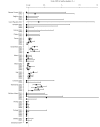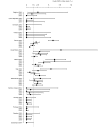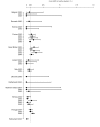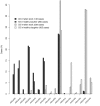A descriptive study of the prevalence of atypical and classical scrapie in sheep in 20 European countries
- PMID: 18544152
- PMCID: PMC2442063
- DOI: 10.1186/1746-6148-4-19
A descriptive study of the prevalence of atypical and classical scrapie in sheep in 20 European countries
Abstract
Background: The development of active surveillance programmes for transmissible spongiform encephalopathies of small ruminants across Europe has led to the recent identification of a previously undetected form of ovine prion disease, 'atypical' scrapie. Knowledge of the epidemiology of this disease is still limited, as is whether it represents a risk for animal and/or public health. The detection of atypical scrapie has been related to the use of only some of the EU agreed rapid tests. Information about the rapid tests used is not, as yet, available from public reports on the surveillance of transmissible spongiform encephalopathies in small ruminants. We collected detailed results of active surveillance from European countries to estimate and to compare the prevalence of atypical scrapie and classical scrapie in sheep for each country stratified by each surveillance stream; healthy slaughtered and found dead adult sheep.
Results: From the 20 participating countries, it appeared that atypical scrapie was detected in Europe wherever the conditions necessary for its diagnosis were present. In most countries, atypical scrapie and classical scrapie occurred at low prevalence level. The classical scrapie prevalence estimates were more variable than those for atypical scrapie, which appeared remarkably homogeneous across countries, surveillance streams and calendar years of surveillance. Differences were observed in the age and genotype of atypical scrapie and classical scrapie cases that are consistent with previous published findings.
Conclusion: This work suggests that atypical scrapie is not rare compared to classical scrapie. The homogeneity of its prevalence, whatever the country, stream of surveillance or year of detection, contrasts with the epidemiological pattern of classical scrapie. This suggests that the aetiology of atypical scrapie differs from that of classical scrapie.
Figures











References
-
- Comber T, Morborne H. Real Improvements in Agriculture, Letters to Reade Peacock. London; 1772. A letter to Dr Hunter, physician in York, concerning the rickets in sheep; pp. 73–83.
-
- OIE . Manual of diagnostic tests and vaccines for terrestrial animals (mammals, birds and bees) Paris, World organisation for animal health; 2004. Scrapie; pp. 642–653.
-
- Wells GAH, Scott AC, Johnson CT, Gunning RF, Hancock RD, Jeffrey M, Dawson M, Bradley R. A novel progressive spongiform encephalopathy in cattle. The Veterinary Record. 1987;121:419–420. - PubMed
Publication types
MeSH terms
LinkOut - more resources
Full Text Sources

